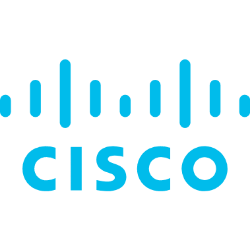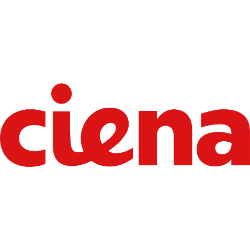CSCO

Cisco Systems, Inc.
CSCO
(3.0)59,33 USD
18.92% ROA
20.56% ROE
20.53x PER
210.431.192.900,00 USD
68.11% DER
3.02% Yield
17.73% NPM
Cisco Systems, Inc. Stock Analysis
Cisco Systems, Inc. Fundamental Analysis
Fundamental analysis in stock investing is like studying the foundation of a house before buying it. It involves looking at a company's financial health, like its earnings, assets, and debts, to determine if it's a good investment based on its fundamental strength and potential for growth.
| # | Analysis | Rating |
|---|---|---|
| 1 |
ROE
The stock's ROE exceeds expectations (29.96%), revealing strong profitability and efficient use of shareholders' equity, making it an attractive investment opportunity. |
|
| 2 |
ROA
The stock's ability to make a lot of money from its assets shows that it is very profitable, making it a good choice for people who want to invest and make a lot of money. |
|
| 3 |
DER
The stock has a minimal amount of debt (19%) relative to its ownership, showcasing a strong financial position and lower risk for investors. |
|
| 4 |
Dividend Growth
Investors can be encouraged by the company's strong dividend growth over the past five years, highlighting its ability to generate consistent returns and provide an attractive investment opportunity. |
|
| 5 |
Revenue Growth
Over the past three years, this company's revenue has consistently grown, demonstrating a positive financial trend that makes it an appealing choice. |
|
| 6 |
Net Profit Growth
This company's net profit has been consistently on the rise over the past three years, indicating a strong financial performance and making it an appealing investment opportunity. |
|
| 7 |
Dividend
The company's track record of consistently paying dividends in the last three years highlights its dedication to providing investors with regular income. |
|
| 8 |
Buffet Intrinsic Value
Warren Buffett's formula suggests that the company's stock is undervalued (225), making it an appealing investment prospect with its intrinsic value surpassing the current market price. |
|
| 9 |
PBV
The stock's high Price-to-Book Value (P/BV) ratio (4.38x) suggests it's overvalued, potentially making it an expensive investment. |
|
| 10 |
Assets Growth
Regrettably, this company's revenue has shown no signs of growth over the past three years, suggesting limited potential for returns and making it a less appealing choice. |
|
| 11 |
Graham Number
The Graham number calculation reveals that this company's stock price is potentially inflated, implying that it may not be a desirable investment option. |
Cisco Systems, Inc. Technical Analysis
Technical analysis in stock investing is like reading the patterns on a weather map to predict future weather conditions. It involves studying past stock price movements and trading volumes to make predictions about where a stock's price might go next, without necessarily looking at the company's financial health.
| # | Analysis | Recommendation |
|---|---|---|
| 1 | Awesome Oscillator | Buy |
| 2 | MACD | Sell |
| 3 | RSI | Hold |
| 4 | Stoch RSI | Sell |
Cisco Systems, Inc. Price Chart
Financial Statements
Financial statements are like report cards for companies. They show how much money a company makes (income statement), what it owns and owes (balance sheet), and where it spends its money (cash flow statement), helping stock investors understand if a company is healthy and worth investing in.
Income Statements
An income statement for a company is like a scoreboard for its profits and losses. It shows how much money the company made (revenue) and how much it spent to make that money (expenses), helping stock investors see if a company is making a profit or not.
Revenue in stock investing is the total amount of money a company earns from its sales, and it's a key factor that investors consider to assess a company's financial performance and growth potential.
| Year | Revenue | Growth |
|---|---|---|
| 1988 | 5.500.000 | |
| 1989 | 27.700.000 | 80.14% |
| 1990 | 69.800.000 | 60.32% |
| 1991 | 183.200.000 | 61.9% |
| 1992 | 339.600.000 | 46.05% |
| 1993 | 649.000.000 | 47.67% |
| 1994 | 1.243.000.000 | 47.79% |
| 1995 | 1.978.916.000 | 37.19% |
| 1996 | 4.096.007.000 | 51.69% |
| 1997 | 6.440.171.000 | 36.4% |
| 1998 | 8.458.777.000 | 23.86% |
| 1999 | 12.154.000.000 | 30.4% |
| 2000 | 18.928.000.000 | 35.79% |
| 2001 | 22.293.000.000 | 15.09% |
| 2002 | 18.915.000.000 | -17.86% |
| 2003 | 18.878.000.000 | -0.2% |
| 2004 | 22.045.000.000 | 14.37% |
| 2005 | 24.801.000.000 | 11.11% |
| 2006 | 28.484.000.000 | 12.93% |
| 2007 | 34.922.000.000 | 18.44% |
| 2008 | 39.540.000.000 | 11.68% |
| 2009 | 36.117.000.000 | -9.48% |
| 2010 | 40.040.000.000 | 9.8% |
| 2011 | 43.218.000.000 | 7.35% |
| 2012 | 46.061.000.000 | 6.17% |
| 2013 | 48.607.000.000 | 5.24% |
| 2014 | 47.142.000.000 | -3.11% |
| 2015 | 49.161.000.000 | 4.11% |
| 2016 | 49.247.000.000 | 0.17% |
| 2017 | 48.005.000.000 | -2.59% |
| 2018 | 49.330.000.000 | 2.69% |
| 2019 | 51.904.000.000 | 4.96% |
| 2020 | 49.301.000.000 | -5.28% |
| 2021 | 49.818.000.000 | 1.04% |
| 2022 | 51.557.000.000 | 3.37% |
| 2023 | 56.998.000.000 | 9.55% |
| 2024 | 53.803.000.000 | -5.94% |
Research and Development Expenses are the costs a company incurs to create and improve its products or services, which can be important for investors to evaluate a company's innovation and potential for future growth.
| Year | Research and Development Expenses | Growth |
|---|---|---|
| 1988 | 0 | |
| 1989 | 0 | 0% |
| 1990 | 0 | 0% |
| 1991 | 0 | 0% |
| 1992 | 0 | 0% |
| 1993 | 0 | 0% |
| 1994 | 88.800.000 | 100% |
| 1995 | 260.579.000 | 65.92% |
| 1996 | 399.291.000 | 34.74% |
| 1997 | 1.206.569.000 | 66.91% |
| 1998 | 1.614.141.000 | 25.25% |
| 1999 | 2.065.000.000 | 21.83% |
| 2000 | 4.077.000.000 | 49.35% |
| 2001 | 4.777.000.000 | 14.65% |
| 2002 | 3.513.000.000 | -35.98% |
| 2003 | 3.139.000.000 | -11.91% |
| 2004 | 3.195.000.000 | 1.75% |
| 2005 | 3.348.000.000 | 4.57% |
| 2006 | 4.158.000.000 | 19.48% |
| 2007 | 4.580.000.000 | 9.21% |
| 2008 | 5.156.000.000 | 11.17% |
| 2009 | 5.271.000.000 | 2.18% |
| 2010 | 5.273.000.000 | 0.04% |
| 2011 | 5.823.000.000 | 9.45% |
| 2012 | 5.488.000.000 | -6.1% |
| 2013 | 5.942.000.000 | 7.64% |
| 2014 | 6.294.000.000 | 5.59% |
| 2015 | 6.207.000.000 | -1.4% |
| 2016 | 6.296.000.000 | 1.41% |
| 2017 | 6.059.000.000 | -3.91% |
| 2018 | 6.332.000.000 | 4.31% |
| 2019 | 6.577.000.000 | 3.73% |
| 2020 | 6.347.000.000 | -3.62% |
| 2021 | 6.549.000.000 | 3.08% |
| 2022 | 6.774.000.000 | 3.32% |
| 2023 | 7.551.000.000 | 10.29% |
| 2024 | 7.983.000.000 | 5.41% |
General and Administrative Expenses are the costs a company incurs to run its day-to-day operations, such as office rent, salaries, and utilities, which investors consider to understand a company's overall efficiency and management effectiveness.
| Year | General and Administrative Expenses | Growth |
|---|---|---|
| 1988 | 0 | |
| 1989 | 0 | 0% |
| 1990 | 0 | 0% |
| 1991 | 0 | 0% |
| 1992 | 0 | 0% |
| 1993 | 0 | 0% |
| 1994 | 0 | 0% |
| 1995 | 76.524.000 | 100% |
| 1996 | 159.770.000 | 52.1% |
| 1997 | 204.661.000 | 21.93% |
| 1998 | 258.246.000 | 20.75% |
| 1999 | 418.000.000 | 38.22% |
| 2000 | 633.000.000 | 33.97% |
| 2001 | 778.000.000 | 18.64% |
| 2002 | 618.000.000 | -25.89% |
| 2003 | 702.000.000 | 11.97% |
| 2004 | 867.000.000 | 19.03% |
| 2005 | 959.000.000 | 9.59% |
| 2006 | 1.169.000.000 | 17.96% |
| 2007 | 1.513.000.000 | 22.74% |
| 2008 | 2.007.000.000 | 24.61% |
| 2009 | 1.565.000.000 | -28.24% |
| 2010 | 1.999.000.000 | 21.71% |
| 2011 | 1.908.000.000 | -4.77% |
| 2012 | 2.322.000.000 | 17.83% |
| 2013 | 2.264.000.000 | -2.56% |
| 2014 | 1.934.000.000 | -17.06% |
| 2015 | 2.040.000.000 | 5.2% |
| 2016 | 1.814.000.000 | -12.46% |
| 2017 | 1.993.000.000 | 8.98% |
| 2018 | 2.144.000.000 | 7.04% |
| 2019 | 1.827.000.000 | -17.35% |
| 2020 | 1.925.000.000 | 5.09% |
| 2021 | 2.152.000.000 | 10.55% |
| 2022 | 2.101.000.000 | -2.43% |
| 2023 | 2.478.000.000 | 15.21% |
| 2024 | 2.813.000.000 | 11.91% |
EBITDA stands for Earnings Before Interest, Taxes, Depreciation, and Amortization. It is a measure that helps stock investors analyze a company's profitability by looking at its earnings without considering certain expenses. This helps to get a clearer picture of the company's financial performance and its ability to generate cash flow.
| Year | EBITDA | Growth |
|---|---|---|
| 1988 | 600.000 | |
| 1989 | 7.000.000 | 91.43% |
| 1990 | 22.500.000 | 68.89% |
| 1991 | 69.200.000 | 67.49% |
| 1992 | 136.100.000 | 49.16% |
| 1993 | 277.154.000 | 50.89% |
| 1994 | 518.900.000 | 46.59% |
| 1995 | 701.449.000 | 26.02% |
| 1996 | 1.533.400.000 | 54.26% |
| 1997 | 1.843.000.000 | 16.8% |
| 1998 | 2.399.000.000 | 23.18% |
| 1999 | 3.470.000.000 | 30.86% |
| 2000 | 4.098.000.000 | 15.32% |
| 2001 | 1.402.000.000 | -192.3% |
| 2002 | 4.876.000.000 | 71.25% |
| 2003 | 4.882.000.000 | 0.12% |
| 2004 | 7.491.000.000 | 34.83% |
| 2005 | 9.045.000.000 | 17.18% |
| 2006 | 9.005.000.000 | -0.44% |
| 2007 | 11.251.000.000 | 19.96% |
| 2008 | 12.285.000.000 | 8.42% |
| 2009 | 9.712.000.000 | -26.49% |
| 2010 | 12.068.000.000 | 19.52% |
| 2011 | 10.939.000.000 | -10.32% |
| 2012 | 12.963.000.000 | 15.61% |
| 2013 | 14.161.000.000 | 8.46% |
| 2014 | 12.709.000.000 | -11.42% |
| 2015 | 14.209.000.000 | 10.56% |
| 2016 | 15.678.000.000 | 9.37% |
| 2017 | 15.383.000.000 | -1.92% |
| 2018 | 16.172.000.000 | 4.88% |
| 2019 | 17.334.000.000 | 6.7% |
| 2020 | 16.363.000.000 | -5.93% |
| 2021 | 15.558.000.000 | -5.17% |
| 2022 | 16.794.000.000 | 7.36% |
| 2023 | 17.471.000.000 | 3.87% |
| 2024 | 15.747.000.000 | -10.95% |
Gross profit is the money a company makes from selling its products or services after subtracting the cost of producing or providing them, and it is an important measure for investors to understand a company's profitability.
| Year | Gross Profit | Growth |
|---|---|---|
| 1988 | 3.100.000 | |
| 1989 | 16.200.000 | 80.86% |
| 1990 | 46.900.000 | 65.46% |
| 1991 | 123.700.000 | 62.09% |
| 1992 | 235.100.000 | 47.38% |
| 1993 | 452.100.000 | 48% |
| 1994 | 861.000.000 | 47.49% |
| 1995 | 1.334.764.000 | 35.49% |
| 1996 | 2.686.145.000 | 50.31% |
| 1997 | 4.198.793.000 | 36.03% |
| 1998 | 5.541.160.000 | 24.23% |
| 1999 | 7.914.000.000 | 29.98% |
| 2000 | 12.182.000.000 | 35.04% |
| 2001 | 11.072.000.000 | -10.03% |
| 2002 | 12.013.000.000 | 7.83% |
| 2003 | 13.233.000.000 | 9.22% |
| 2004 | 15.126.000.000 | 12.51% |
| 2005 | 16.671.000.000 | 9.27% |
| 2006 | 18.747.000.000 | 11.07% |
| 2007 | 22.336.000.000 | 16.07% |
| 2008 | 25.484.000.000 | 12.35% |
| 2009 | 23.094.000.000 | -10.35% |
| 2010 | 25.643.000.000 | 9.94% |
| 2011 | 26.536.000.000 | 3.37% |
| 2012 | 28.209.000.000 | 5.93% |
| 2013 | 29.440.000.000 | 4.18% |
| 2014 | 27.769.000.000 | -6.02% |
| 2015 | 29.681.000.000 | 6.44% |
| 2016 | 30.960.000.000 | 4.13% |
| 2017 | 30.224.000.000 | -2.44% |
| 2018 | 30.606.000.000 | 1.25% |
| 2019 | 32.666.000.000 | 6.31% |
| 2020 | 31.683.000.000 | -3.1% |
| 2021 | 31.894.000.000 | 0.66% |
| 2022 | 32.248.000.000 | 1.1% |
| 2023 | 35.753.000.000 | 9.8% |
| 2024 | 34.828.000.000 | -2.66% |
Net income in stock investing is like the money a company actually gets to keep as profit after paying all its bills, and it's an important measure to understand how well a company is doing financially.
| Year | Net Profit | Growth |
|---|---|---|
| 1988 | 400.000 | |
| 1989 | 4.200.000 | 90.48% |
| 1990 | 13.900.000 | 69.78% |
| 1991 | 43.200.000 | 67.82% |
| 1992 | 84.400.000 | 48.82% |
| 1993 | 172.000.000 | 50.93% |
| 1994 | 314.900.000 | 45.38% |
| 1995 | 421.008.000 | 25.2% |
| 1996 | 913.324.000 | 53.9% |
| 1997 | 1.048.679.000 | 12.91% |
| 1998 | 1.350.072.000 | 22.32% |
| 1999 | 2.096.000.000 | 35.59% |
| 2000 | 2.668.000.000 | 21.44% |
| 2001 | -1.014.000.000 | 363.12% |
| 2002 | 1.893.000.000 | 153.57% |
| 2003 | 3.578.000.000 | 47.09% |
| 2004 | 4.401.000.000 | 18.7% |
| 2005 | 5.741.000.000 | 23.34% |
| 2006 | 5.580.000.000 | -2.89% |
| 2007 | 7.333.000.000 | 23.91% |
| 2008 | 8.052.000.000 | 8.93% |
| 2009 | 6.134.000.000 | -31.27% |
| 2010 | 7.767.000.000 | 21.02% |
| 2011 | 6.490.000.000 | -19.68% |
| 2012 | 8.041.000.000 | 19.29% |
| 2013 | 9.983.000.000 | 19.45% |
| 2014 | 7.853.000.000 | -27.12% |
| 2015 | 8.981.000.000 | 12.56% |
| 2016 | 10.739.000.000 | 16.37% |
| 2017 | 9.609.000.000 | -11.76% |
| 2018 | 110.000.000 | -8635.45% |
| 2019 | 11.621.000.000 | 99.05% |
| 2020 | 11.214.000.000 | -3.63% |
| 2021 | 10.591.000.000 | -5.88% |
| 2022 | 11.812.000.000 | 10.34% |
| 2023 | 12.613.000.000 | 6.35% |
| 2024 | 10.320.000.000 | -22.22% |
EPS, or earnings per share, is a measure that shows how much profit a company has earned for each outstanding share of its stock, and it is important for stock investors as it helps understand the profitability of a company and compare it with other companies in the market.
| Year | Earning per Share (EPS) | Growth |
|---|---|---|
| 1988 | 0 | |
| 1989 | 0 | 0% |
| 1990 | 0 | 0% |
| 1991 | 0 | 0% |
| 1992 | 0 | 0% |
| 1993 | 0 | 0% |
| 1994 | 0 | 0% |
| 1995 | 0 | 0% |
| 1996 | 0 | 0% |
| 1997 | 0 | 0% |
| 1998 | 0 | 0% |
| 1999 | 0 | 0% |
| 2000 | 0 | 0% |
| 2001 | 0 | 0% |
| 2002 | 0 | 0% |
| 2003 | 1 | 0% |
| 2004 | 1 | 0% |
| 2005 | 1 | 0% |
| 2006 | 1 | 0% |
| 2007 | 1 | 100% |
| 2008 | 1 | 0% |
| 2009 | 1 | 0% |
| 2010 | 1 | 0% |
| 2011 | 1 | 0% |
| 2012 | 2 | 0% |
| 2013 | 2 | 0% |
| 2014 | 2 | 0% |
| 2015 | 2 | 0% |
| 2016 | 2 | 50% |
| 2017 | 2 | -100% |
| 2018 | 0 | 0% |
| 2019 | 3 | 100% |
| 2020 | 3 | 0% |
| 2021 | 3 | 0% |
| 2022 | 3 | 0% |
| 2023 | 3 | 33.33% |
| 2024 | 3 | -50% |
Cashflow Statements
Cashflow statements show the movement of money in and out of a company, helping stock investors understand how much money a company makes and spends. By examining cashflow statements, investors can assess if a company is generating enough cash to pay its bills, invest in growth, and provide returns to stockholders.
Free cash flow is the leftover cash that a company generates after covering its operating expenses and capital expenditures, which is important for stock investors as it shows how much money a company has available to invest in growth, pay dividends, or reduce debt.
| Year | Free Cashflow | Growth |
|---|---|---|
| 1989 | 1.900.000 | |
| 1990 | 5.400.000 | 64.81% |
| 1991 | 32.700.000 | 83.49% |
| 1992 | 103.900.000 | 68.53% |
| 1993 | 142.100.000 | 26.88% |
| 1994 | 257.900.000 | 44.9% |
| 1995 | 283.833.000 | 9.14% |
| 1996 | 779.886.000 | 63.61% |
| 1997 | 1.111.826.000 | 29.86% |
| 1998 | 2.465.672.000 | 54.91% |
| 1999 | 3.854.000.000 | 36.02% |
| 2000 | 4.611.000.000 | 16.42% |
| 2001 | 4.117.000.000 | -12% |
| 2002 | 3.946.000.000 | -4.33% |
| 2003 | 4.523.000.000 | 12.76% |
| 2004 | 6.508.000.000 | 30.5% |
| 2005 | 6.876.000.000 | 5.35% |
| 2006 | 7.127.000.000 | 3.52% |
| 2007 | 8.853.000.000 | 19.5% |
| 2008 | 10.821.000.000 | 18.19% |
| 2009 | 8.892.000.000 | -21.69% |
| 2010 | 9.165.000.000 | 2.98% |
| 2011 | 8.905.000.000 | -2.92% |
| 2012 | 10.365.000.000 | 14.09% |
| 2013 | 11.734.000.000 | 11.67% |
| 2014 | 11.057.000.000 | -6.12% |
| 2015 | 11.325.000.000 | 2.37% |
| 2016 | 12.424.000.000 | 8.85% |
| 2017 | 12.912.000.000 | 3.78% |
| 2018 | 12.832.000.000 | -0.62% |
| 2019 | 14.922.000.000 | 14.01% |
| 2020 | 14.656.000.000 | -1.81% |
| 2021 | 14.762.000.000 | 0.72% |
| 2022 | 12.749.000.000 | -15.79% |
| 2023 | 19.037.000.000 | 33.03% |
| 2024 | 3.532.000.000 | -438.99% |
Operating cash flow represents the cash generated or consumed by a company's day-to-day operations, excluding external investing or financing activities, and is crucial for stock investors as it shows how much cash a company is generating from its core business operations.
| Year | Operating Cashflow | Growth |
|---|---|---|
| 1989 | 2.200.000 | |
| 1990 | 9.500.000 | 76.84% |
| 1991 | 44.000.000 | 78.41% |
| 1992 | 125.500.000 | 64.94% |
| 1993 | 176.000.000 | 28.69% |
| 1994 | 317.500.000 | 44.57% |
| 1995 | 395.755.000 | 19.77% |
| 1996 | 1.062.726.000 | 62.76% |
| 1997 | 1.442.123.000 | 26.31% |
| 1998 | 2.880.515.000 | 49.94% |
| 1999 | 4.438.000.000 | 35.09% |
| 2000 | 6.141.000.000 | 27.73% |
| 2001 | 6.392.000.000 | 3.93% |
| 2002 | 6.587.000.000 | 2.96% |
| 2003 | 5.240.000.000 | -25.71% |
| 2004 | 7.121.000.000 | 26.41% |
| 2005 | 7.568.000.000 | 5.91% |
| 2006 | 7.899.000.000 | 4.19% |
| 2007 | 10.104.000.000 | 21.82% |
| 2008 | 12.089.000.000 | 16.42% |
| 2009 | 9.897.000.000 | -22.15% |
| 2010 | 10.173.000.000 | 2.71% |
| 2011 | 10.079.000.000 | -0.93% |
| 2012 | 11.491.000.000 | 12.29% |
| 2013 | 12.894.000.000 | 10.88% |
| 2014 | 12.332.000.000 | -4.56% |
| 2015 | 12.552.000.000 | 1.75% |
| 2016 | 13.570.000.000 | 7.5% |
| 2017 | 13.876.000.000 | 2.21% |
| 2018 | 13.666.000.000 | -1.54% |
| 2019 | 15.831.000.000 | 13.68% |
| 2020 | 15.426.000.000 | -2.63% |
| 2021 | 15.454.000.000 | 0.18% |
| 2022 | 13.226.000.000 | -16.85% |
| 2023 | 19.886.000.000 | 33.49% |
| 2024 | 3.730.000.000 | -433.14% |
Capex, short for capital expenditures, refers to the money a company spends on acquiring or upgrading tangible assets like buildings, equipment, or technology, which is important for stock investors as it indicates how much a company is investing in its infrastructure to support future growth and profitability.
| Year | Capital Expenditure | Growth |
|---|---|---|
| 1989 | 300.000 | |
| 1990 | 4.100.000 | 92.68% |
| 1991 | 11.300.000 | 63.72% |
| 1992 | 21.600.000 | 47.69% |
| 1993 | 33.900.000 | 36.28% |
| 1994 | 59.600.000 | 43.12% |
| 1995 | 111.922.000 | 46.75% |
| 1996 | 282.840.000 | 60.43% |
| 1997 | 330.297.000 | 14.37% |
| 1998 | 414.843.000 | 20.38% |
| 1999 | 584.000.000 | 28.97% |
| 2000 | 1.530.000.000 | 61.83% |
| 2001 | 2.275.000.000 | 32.75% |
| 2002 | 2.641.000.000 | 13.86% |
| 2003 | 717.000.000 | -268.34% |
| 2004 | 613.000.000 | -16.97% |
| 2005 | 692.000.000 | 11.42% |
| 2006 | 772.000.000 | 10.36% |
| 2007 | 1.251.000.000 | 38.29% |
| 2008 | 1.268.000.000 | 1.34% |
| 2009 | 1.005.000.000 | -26.17% |
| 2010 | 1.008.000.000 | 0.3% |
| 2011 | 1.174.000.000 | 14.14% |
| 2012 | 1.126.000.000 | -4.26% |
| 2013 | 1.160.000.000 | 2.93% |
| 2014 | 1.275.000.000 | 9.02% |
| 2015 | 1.227.000.000 | -3.91% |
| 2016 | 1.146.000.000 | -7.07% |
| 2017 | 964.000.000 | -18.88% |
| 2018 | 834.000.000 | -15.59% |
| 2019 | 909.000.000 | 8.25% |
| 2020 | 770.000.000 | -18.05% |
| 2021 | 692.000.000 | -11.27% |
| 2022 | 477.000.000 | -45.07% |
| 2023 | 849.000.000 | 43.82% |
| 2024 | 198.000.000 | -328.79% |
Balance Sheet
Balance sheets provide a snapshot of a company's financial health and its assets (such as cash, inventory, and property) and liabilities (like debts and obligations) at a specific point in time. For stock investors, balance sheets help assess the company's overall worth and evaluate its ability to meet financial obligations and support future growth.
Equity refers to the ownership interest or stake that shareholders have in a company, representing their claim on its assets and earnings after all debts and liabilities are paid.
| Year | Equity | Growth |
|---|---|---|
| 1988 | 500.000 | |
| 1989 | 7.400.000 | 93.24% |
| 1990 | 69.200.000 | 89.31% |
| 1991 | 127.500.000 | 45.73% |
| 1992 | 245.600.000 | 48.09% |
| 1993 | 475.200.000 | 48.32% |
| 1994 | 848.200.000 | 43.98% |
| 1995 | 1.419.523.000 | 40.25% |
| 1996 | 2.860.879.000 | 50.38% |
| 1997 | 4.331.875.000 | 33.96% |
| 1998 | 7.149.725.000 | 39.41% |
| 1999 | 11.722.000.000 | 39.01% |
| 2000 | 26.542.000.000 | 55.84% |
| 2001 | 27.142.000.000 | 2.21% |
| 2002 | 28.671.000.000 | 5.33% |
| 2003 | 28.039.000.000 | -2.25% |
| 2004 | 25.916.000.000 | -8.19% |
| 2005 | 23.184.000.000 | -11.78% |
| 2006 | 23.918.000.000 | 3.07% |
| 2007 | 31.490.000.000 | 24.05% |
| 2008 | 34.402.000.000 | 8.46% |
| 2009 | 38.677.000.000 | 11.05% |
| 2010 | 44.273.000.000 | 12.64% |
| 2011 | 47.292.000.000 | 6.38% |
| 2012 | 51.316.000.000 | 7.84% |
| 2013 | 59.136.000.000 | 13.22% |
| 2014 | 56.668.000.000 | -4.36% |
| 2015 | 59.716.000.000 | 5.1% |
| 2016 | 63.584.000.000 | 6.08% |
| 2017 | 66.137.000.000 | 3.86% |
| 2018 | 43.204.000.000 | -53.08% |
| 2019 | 33.571.000.000 | -28.69% |
| 2020 | 37.920.000.000 | 11.47% |
| 2021 | 41.275.000.000 | 8.13% |
| 2022 | 39.773.000.000 | -3.78% |
| 2023 | 44.353.000.000 | 10.33% |
| 2024 | 45.457.000.000 | 2.43% |
Assets represent the valuable resources that a company owns, such as cash, inventory, property, and equipment, and understanding a company's assets helps investors assess its value and potential for generating future profits.
| Year | Assets | Growth |
|---|---|---|
| 1988 | 4.800.000 | |
| 1989 | 16.500.000 | 70.91% |
| 1990 | 82.700.000 | 80.05% |
| 1991 | 154.100.000 | 46.33% |
| 1992 | 323.900.000 | 52.42% |
| 1993 | 595.200.000 | 45.58% |
| 1994 | 1.053.700.000 | 43.51% |
| 1995 | 1.757.279.000 | 40.04% |
| 1996 | 3.630.232.000 | 51.59% |
| 1997 | 5.451.984.000 | 33.41% |
| 1998 | 8.916.705.000 | 38.86% |
| 1999 | 14.725.000.000 | 39.45% |
| 2000 | 32.870.000.000 | 55.2% |
| 2001 | 35.238.000.000 | 6.72% |
| 2002 | 37.795.000.000 | 6.77% |
| 2003 | 37.107.000.000 | -1.85% |
| 2004 | 35.594.000.000 | -4.25% |
| 2005 | 33.883.000.000 | -5.05% |
| 2006 | 43.315.000.000 | 21.78% |
| 2007 | 53.340.000.000 | 18.79% |
| 2008 | 58.734.000.000 | 9.18% |
| 2009 | 68.128.000.000 | 13.79% |
| 2010 | 81.130.000.000 | 16.03% |
| 2011 | 87.095.000.000 | 6.85% |
| 2012 | 91.759.000.000 | 5.08% |
| 2013 | 101.191.000.000 | 9.32% |
| 2014 | 105.134.000.000 | 3.75% |
| 2015 | 113.481.000.000 | 7.36% |
| 2016 | 121.652.000.000 | 6.72% |
| 2017 | 129.818.000.000 | 6.29% |
| 2018 | 108.784.000.000 | -19.34% |
| 2019 | 97.793.000.000 | -11.24% |
| 2020 | 94.853.000.000 | -3.1% |
| 2021 | 97.497.000.000 | 2.71% |
| 2022 | 94.002.000.000 | -3.72% |
| 2023 | 101.852.000.000 | 7.71% |
| 2024 | 124.413.000.000 | 18.13% |
Liabilities refer to the financial obligations or debts that a company owes to creditors or external parties, and understanding a company's liabilities is important for investors as it helps assess the company's financial risk and ability to meet its obligations.
| Year | Liabilities | Growth |
|---|---|---|
| 1988 | 4.300.000 | |
| 1989 | 9.100.000 | 52.75% |
| 1990 | 13.500.000 | 32.59% |
| 1991 | 26.600.000 | 49.25% |
| 1992 | 78.300.000 | 66.03% |
| 1993 | 120.000.000 | 34.75% |
| 1994 | 205.500.000 | 41.61% |
| 1995 | 337.756.000 | 39.16% |
| 1996 | 769.353.000 | 56.1% |
| 1997 | 1.120.109.000 | 31.31% |
| 1998 | 1.766.980.000 | 36.61% |
| 1999 | 3.003.000.000 | 41.16% |
| 2000 | 6.328.000.000 | 52.54% |
| 2001 | 8.096.000.000 | 21.84% |
| 2002 | 9.124.000.000 | 11.27% |
| 2003 | 9.068.000.000 | -0.62% |
| 2004 | 9.678.000.000 | 6.3% |
| 2005 | 10.699.000.000 | 9.54% |
| 2006 | 19.397.000.000 | 44.84% |
| 2007 | 21.850.000.000 | 11.23% |
| 2008 | 24.332.000.000 | 10.2% |
| 2009 | 29.451.000.000 | 17.38% |
| 2010 | 36.845.000.000 | 20.07% |
| 2011 | 39.836.000.000 | 7.51% |
| 2012 | 40.458.000.000 | 1.54% |
| 2013 | 42.063.000.000 | 3.82% |
| 2014 | 48.473.000.000 | 13.22% |
| 2015 | 53.774.000.000 | 9.86% |
| 2016 | 58.067.000.000 | 7.39% |
| 2017 | 63.681.000.000 | 8.82% |
| 2018 | 65.580.000.000 | 2.9% |
| 2019 | 64.222.000.000 | -2.11% |
| 2020 | 56.933.000.000 | -12.8% |
| 2021 | 56.222.000.000 | -1.26% |
| 2022 | 54.229.000.000 | -3.68% |
| 2023 | 57.499.000.000 | 5.69% |
| 2024 | 78.956.000.000 | 27.18% |
Cisco Systems, Inc. Financial Ratio (TTM)
Valuation Metrics
- Revenue per Share
- 13.39
- Net Income per Share
- 2.57
- Price to Earning Ratio
- 20.53x
- Price To Sales Ratio
- 3.91x
- POCF Ratio
- 19.47
- PFCF Ratio
- 20.61
- Price to Book Ratio
- 4.66
- EV to Sales
- 4.35
- EV Over EBITDA
- 14.82
- EV to Operating CashFlow
- 21.5
- EV to FreeCashFlow
- 22.91
- Earnings Yield
- 0.05
- FreeCashFlow Yield
- 0.05
- Market Cap
- 210,43 Bil.
- Enterprise Value
- 233,89 Bil.
- Graham Number
- 25.57
- Graham NetNet
- -12.92
Income Statement Metrics
- Net Income per Share
- 2.57
- Income Quality
- 1.05
- ROE
- 0.23
- Return On Assets
- 0.08
- Return On Capital Employed
- 0.13
- Net Income per EBT
- 0.93
- EBT Per Ebit
- 0.93
- Ebit per Revenue
- 0.2
- Effective Tax Rate
- 0.07
Margins
- Sales, General, & Administrative to Revenue
- 0.05
- Research & Developement to Revenue
- 0.15
- Stock Based Compensation to Revenue
- 0.06
- Gross Profit Margin
- 0.65
- Operating Profit Margin
- 0.2
- Pretax Profit Margin
- 0.19
- Net Profit Margin
- 0.18
Dividends
- Dividend Yield
- 0.03
- Dividend Yield %
- 3.02
- Payout Ratio
- 0.62
- Dividend Per Share
- 1.59
Operating Metrics
- Operating Cashflow per Share
- 2.71
- Free CashFlow per Share
- 2.54
- Capex to Operating CashFlow
- 0.06
- Capex to Revenue
- 0.01
- Capex to Depreciation
- 0.27
- Return on Invested Capital
- 0.14
- Return on Tangible Assets
- 0.19
- Days Sales Outstanding
- 68
- Days Payables Outstanding
- 45.1
- Days of Inventory on Hand
- 66.02
- Receivables Turnover
- 5.37
- Payables Turnover
- 8.09
- Inventory Turnover
- 5.53
- Capex per Share
- 0.17
Balance Sheet
- Cash per Share
- 4,44
- Book Value per Share
- 11,31
- Tangible Book Value per Share
- -6.08
- Shareholders Equity per Share
- 11.31
- Interest Debt per Share
- 7.96
- Debt to Equity
- 0.68
- Debt to Assets
- 0.25
- Net Debt to EBITDA
- 1.49
- Current Ratio
- 0.91
- Tangible Asset Value
- -24,42 Bil.
- Net Current Asset Value
- -42,09 Bil.
- Invested Capital
- 68247000000
- Working Capital
- -3,72 Bil.
- Intangibles to Total Assets
- 0.56
- Average Receivables
- 9,30 Bil.
- Average Payables
- 2,18 Bil.
- Average Inventory
- 3245500000
- Debt to Market Cap
- 0.15
Dividends
Dividends in stock investing are like rewards that companies give to their shareholders. They are a portion of the company's profits distributed to investors, typically in the form of cash payments, as a way for them to share in the company's success.
| Year | Dividends | Growth |
|---|---|---|
| 2011 | 0 | |
| 2012 | 1 | 0% |
| 2013 | 1 | 0% |
| 2014 | 1 | 0% |
| 2015 | 1 | 0% |
| 2016 | 1 | 0% |
| 2017 | 1 | 100% |
| 2018 | 1 | 0% |
| 2019 | 1 | 0% |
| 2020 | 1 | 0% |
| 2021 | 1 | 0% |
| 2022 | 2 | 0% |
| 2023 | 2 | 0% |
| 2024 | 2 | 0% |
Cisco Systems, Inc. Profile
About Cisco Systems, Inc.
Cisco Systems, Inc. designs, manufactures, and sells Internet Protocol based networking and other products related to the communications and information technology industry in the Americas, Europe, the Middle East, Africa, the Asia Pacific, Japan, and China. The company also offers switching portfolio encompasses campus switching as well as data center switching; enterprise routing portfolio interconnects public and private wireline and mobile networks, delivering highly secure, and reliable connectivity to campus, data center and branch networks; and wireless products include indoor and outdoor wireless coverage designed for seamless roaming use of voice, video, and data applications. In addition, it provides security, which comprising network security, identity and access management, secure access service edge, and threat intelligence, detection, and response offerings; collaboration products, such as Webex Suite, collaboration devices, contact center, and communication platform as a service; end-to-end collaboration solutions that can be delivered from the cloud, on-premise or within hybrid cloud environments allowing customers to transition their collaboration solutions from on-premise to the cloud; and observability offers network assurance, monitoring and analytics and observability suite. Further, the company offers a range of service and support options for its customers, including technical support and advanced services and advisory services. It serves businesses of various sizes, public institutions, governments, and service providers. The company sells its products and services directly, as well as through systems integrators, service providers, other resellers, and distributors. Cisco Systems, Inc. has strategic alliances with other companies. Cisco Systems, Inc. was incorporated in 1984 and is headquartered in San Jose, California.
- CEO
- Mr. Charles H. Robbins
- Employee
- 90.400
- Address
-
170 West Tasman Drive
San Jose, 95134-1706
Cisco Systems, Inc. Executives & BODs
| # | Name | Age |
|---|---|---|
| 1 |
Mr. Ahmed Sami Badri Head of Investor Relations |
70 |
| 2 |
Mr. Andrew Ashton Senior Vice President of Corporate Finance |
70 |
| 3 |
Mr. Thimaya Subaiya Executive Vice President of Operations |
70 |
| 4 |
Ms. M. Victoria Wong Senior Vice President & Chief Accounting Officer |
70 |
| 5 |
Ms. Deborah L. Stahlkopf Executive Vice President & Chief Legal Officer |
70 |
| 6 |
Ms. Maria Poveromo Senior Vice President & Chief Communications Officer |
70 |
| 7 |
Mr. Fletcher Previn Senior Vice President & Chief Information Officer |
70 |
| 8 |
Mr. Gary L. Steele President of Go-to-Market |
70 |
| 9 |
Mr. Charles H. Robbins Chairman & Chief Executive Officer |
70 |
| 10 |
Mr. Richard Scott Herren Executive Vice President & Chief Financial Officer |
70 |











